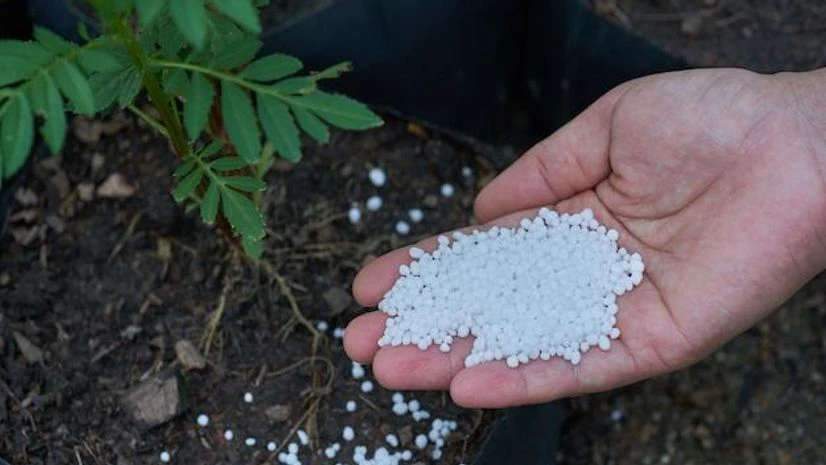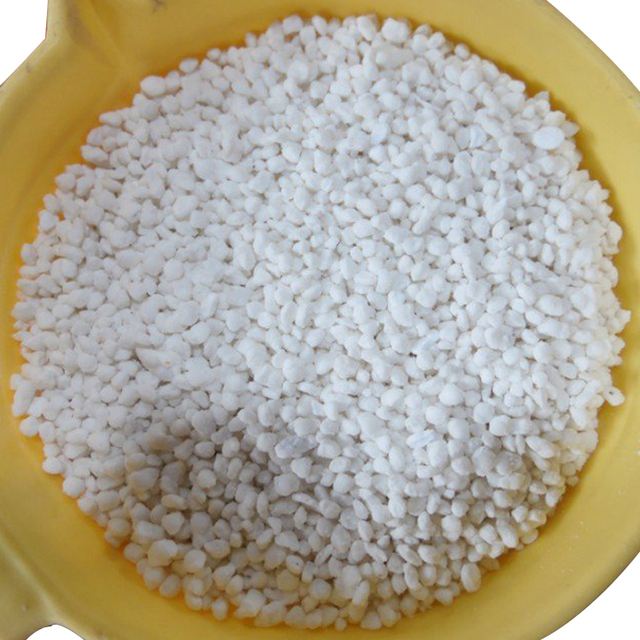Introduction
Urea fertilizer undoubtedly dominates the agriculture industry because it is composed of 46 percent nitrogen, making it the most economical and cost-effective nitrogenous fertilizer available. It aids in the growth of plants, increases their yield, and improves their quality. Humans rely on larger plant harvests to sustain their daily lives. Therefore, applying urea fertilizer is vital in these cases where farmers need to produce as many crops as possible.
Using urea fertilizers correctly means that a plant will get the amount of nitrogen that it needs when it needs it, to develop to its full productive potential. In the words of James Allen, professor of agronomy at Purdue University in Indiana: ‘It is critical that we utilise our nitrogen supply wisely, especially through urea and other products, to produce sustainable agricultural outputs.’ The ecological implications are also at stake.
In addition, those farmers are much closer to receive help in using fertilizers more efficiency, which means a better use of the nitrogen, fewer harmful emissions to the environment and much more stable and robust food productions. This is an introduction for an in-depth article following how to prevent nitrogen losses in soil due to applying urea fertilizers.
Understanding Urea Fertilizer
Urea fertilizer contains 46 per cent nitrogen, and is thus one of the most concentrated sources on the market, valued for its ability to stimulate vigorous plant growth and high yield. The urea molecule, CO(NH₂)₂, is largely dissolvable in water and is readily absorbed by plant roots when applied properly.
But what draws farmers – and many gardeners – to urea is that it’s cheap and easy to apply in granular form, and can be mixed with other fertilizers. The soil scientist Elizabeth Gordon explains: ‘The ease with which urea can be applied essentially anywhere, to various types of crops and even in conjunction with other fertilizers, results in it being a valuable and economical nutrient management tool in a diversity of agricultural settings’.
Furthermore, its chemical stability is enhanced when urea is converted (‘hydrolysed’) in contact with the soil moisture to a more stable and less volatile (evaporative) form called ammonium bicarbonate, which gives the plant more time to absorb the nitrogen before it can escape into the atmosphere or be leached from the soil by water. The soil fertility enzyme involved in this conversion, urease, highlights the importance of soil condition in the use of urea.
Knowing these chemical properties and resulting practical benefits of urea fertilizer is a good starting point in learning how to apply it in a way that optimises the ability of the plants to use this fertiliser nutrient.

How to Apply Urea Fertilizer
If urea is applied out of season then its nitrogen is apt to be lost to the environment. The key to apply urea fertilizer is to maximise the beneficial effects and minimise the unintended negative effects. If regulations are followed, crops in the Netherlands are abundantly fed by urea throughout the year. I refer to the basic workflow given below:
Timing of Application
Getting urea on in a timely way is essential. The idea is to make sure that plants are both growing actively, so they can uptake nitrogen readily, and that nitrogen doesn’t volatilise (decompose before it reaches the soil). In practice, that means applying urea in early spring when many crops are emerging as temperatures increase and the weather is less likely to be too warm. ‘To reduce volatilisation loss, apply urea on a cool morning or cloudy day,’ says Henry Clarkson, a crop nutrition consultant.
Methods of Application
Broadcasting: This means spreading urea evenly over the soil surface. It’s easy to do, but higher loss of nitrogen can result unless it rains soon after application or is immediately incorporated into the soil.
Side-dressing: Application of urea next to rows of crops or around the individual plants more or less ‘localises’ the input, making it also more readily accessible for the root system of the plants and decreasing the risk of losses.
Foliar Application: Urea can also be applied to plant foliage. Use caution, as the solution concentration can be very concentrated and cause burning when applied to plant foliage. Nearly always a lower concentration of urea is used in foliar feeding.
Safety Measures
If you work with urea fertilizer, wear a glove and goggles to avoid irritation or injury, and also make sure that the storage and appliance knives are absolutely clean to prevent contamination, and uniform to achieve a uniform distribution.
Best Practices
Water Management: After broadcast urea application, provide light irrigation to move it further down, where it will be converted to the form usable by the plant more rapidly, but do not over-water and cause precious nutrients to be lost through leaching.
Turn Into the Soil: Tilling or superfically hoeing the soil after broadcasting urea will incorporate it into the soil, reducing nitrogen volatilisation While quantitatively the effects of fertilizers are extremely significant, the ways in which they present themselves are also very intricate. As long as humans continue to depend on agriculture, they will inevitably face nitrogen volatilisation issues. Rather than pretending that it doesn’t exist, understanding this phenomenon helps to build a more sustainable agriculture.
Adhering to these recommendations will help avoid wastage of urea and the related environmental damage, as well as improve the fertilizer’s use efficiency thus increasing crop productivity and reducing the impact on the environment, while optimising crop yields.
Maximizing the Effectiveness of Urea Fertilizer
For an excellent response of urea fertilizer and to promote high nutrient use efficiency, assume all the following:
Water Management
Efficient water management after urea application is particularly important to reduce nitrogen loss through volatilisation (in which nitrogen is lost to the atmosphere as a gas). Urea is best applied before a light rain event or irrigation to help dissolve the granules and transport the urea into the soil where it’s more available to plant roots.
Integrating with Other Farming Practices
use of urea use of urea in a crop rotation system may improve the uptake of the nutrient, if we use green manure crops for fixing nitrogen in the soil. In addition, alternating crops with alternative nutrient needs will help soil develop and use the nutrient.
Added inhibitors: If volatilisation is the major problem, you can slow down the conversion of urea to ammonia by adding nitrogen stabilisers – also known as inhibitors. These chemicals slow down the biological processes which can trigger ammonia off gassing, giving the plants longer to pick up the nitrogen. This is particularly helpful in warm humid climates.
Companion planting: Planting legumes, which are nitrogen-fixing plants, along with the crops can add more nitrogen in the soil naturally and complement the urea use for better crop growth.
Monitoring Soil and Plant Health
Soil health must regularly be monitored via soil tests to check nutrient levels, often leading to more precision in urea application. And it is important to look at plant health and growth response to assess whether the fertilizer is needed (eg, yellowing indicate nitrogen deficiency) or if it should be stopped (eg, plants become overly lush and weak).
Implementing these practices, farmers not only enhance the productive use of urea fertilizer but can also contribute to sustainable farming practices that, by maintaining the active nutrient content of soils, ensure their long-term health and productivity.
)
Monitoring and Adjusting
Even if farmers are using urea fertilizer, they must continue to monitor and often adjust management decisions as the season wears on so that the fertilizer matches plants’ needs and the environmental conditions. Adaptive management minimises the downside of urea and maximises its benefits.
Monitoring Plant Response
It’s important to check your crops often after applying urea, to keep an eye out for healthy and usual growth patterns. If your plants start looking more vibrant and green and grow faster, that may be a sign of urea being used effectively. Leaf burn and yellowing, on the other hand, may be a sign of over-application or bad timing. ‘Use leaf colour charts and growth measurements because they’re simple, yet useful for determining what actual nitrogen is taken up by the plant,’ says Laura Thompson, an expert in plant nutrition.
Adjusting Fertilization Practices
Based on observations and regular soil testing, adjustments may be necessary:
Adjusting Application Rates: Based on the feedback received from plants that are exposed to varying amounts of urea, we could adjust the application rates of urea going forward.
Changing Application Timing: Change the time of urea application to coincide more with the stage of plant growth and/or the soil temperature and moisture conditions.
Changing Application Methods: Changing from broadcast in seed-crops to side-dressing in growing crops is an efficient practice in appropriate crop types and growth stages.
This approach to the use of urea fertilizers – continuously optimising as a response to direct field feedback – will result in a more sustainable form of agriculture, will enhance crop production and will maintain the fertility of the soil.
Conclusion
In summary, the article presented the advantages of plant growth when urea fertilizer is applied correctly. Therefore, it is beneficial for farmers to apply urea to their crops. This teaching writing describes clearly how to apply urea fertilizer. It does point out how this magintide changes the growth of plants . It is able to shove how to apply it correctly at the right time and the right steps . Additionally, its address the safety issues regarding this application.
Another point, it also points out how applying urea fertilizer integrate with other types of farming. Ultimately, It is concluded that the benefit of using urea to yeld plant growth is seriously increased when it is applied in the right way .
And as we strive to help fertilisation methods continue to learn and change over time, farmers and gardeners will need to change their monitoring practices along with those methods, as plants’ responses to urea and to their environments change. Successfully gauging urea use today might not only make fertilizer application sustainable during the present crop cycle but also help to sustain future soil health and productivity.
With the expert tips provided, users of urea fertilizer can attain maximum plant growth and also support the sustainability of agriculture. But the journey has only met its initial step and looking into new studies and adaptive techniques will surely continue the trend of providing farmers with the best results.
Here are some scholarly references and articles related to the application of urea fertilizer:
- Methods of Urea Fertilizer Application Influence Growth, Yield, and Nitrogen Use Efficiency of Transplanted Aman Rice: This study investigates different urea application techniques on rice and finds that deep placement of urea briquettes significantly increases yield and nitrogen use efficiency compared to broadcast application.
- Improving the Efficient Use of Urea-Containing Fertilizers: Discusses strategies to increase the efficiency of urea fertilizers, including timing and methods of application to reduce nitrogen loss through volatilization and leaching.
- General Information and Practices in Urea Fertilizer Application: Provides a comprehensive overview of how urea fertilizer should be applied to maximize efficiency and minimize losses. The text discusses the chemical behavior of urea in the soil and the importance of incorporating it into the soil shortly after application to avoid volatilization losses







